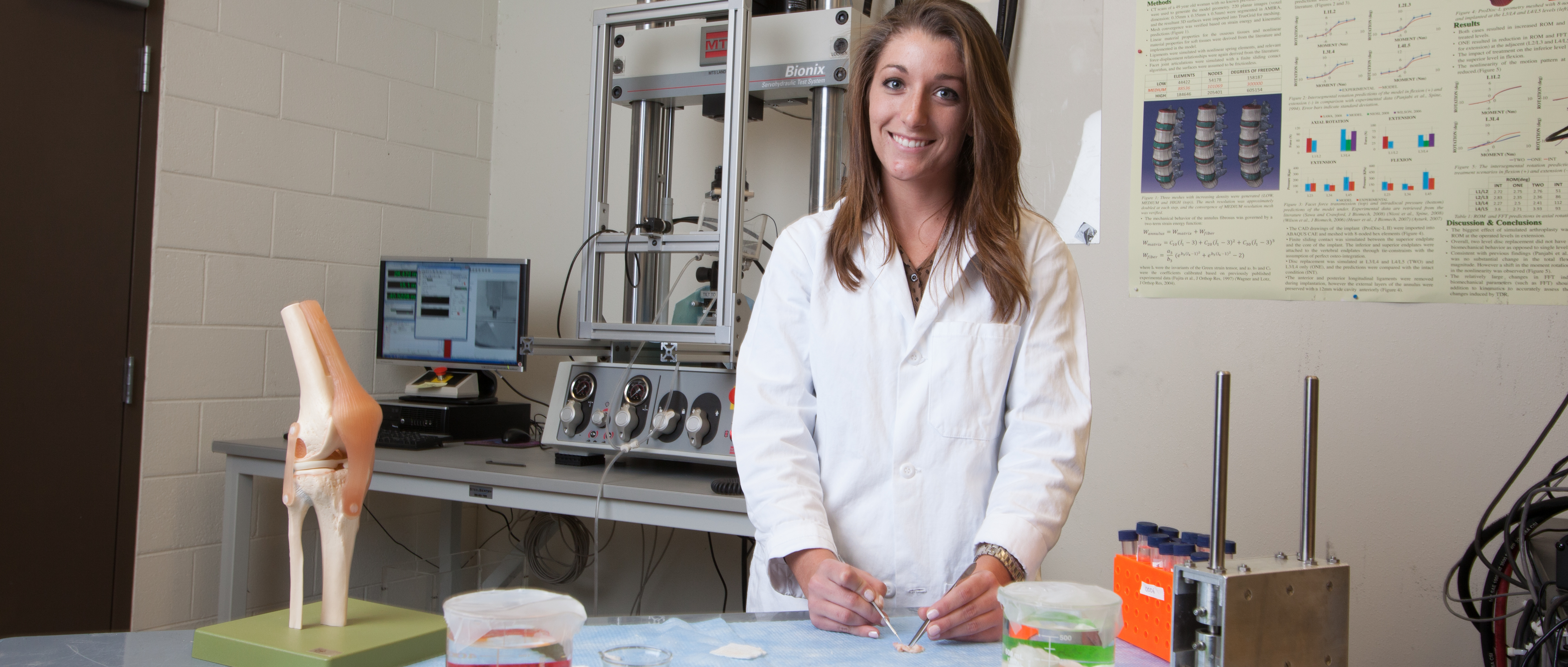 This NIH funded project started with the goal of understanding how osteoarthritis develops and progresses following a traumatic injury that leads to rupture of the anterior cruciate ligament and tearing of the meniscal tissue.
This NIH funded project started with the goal of understanding how osteoarthritis develops and progresses following a traumatic injury that leads to rupture of the anterior cruciate ligament and tearing of the meniscal tissue.
While osteoarthritis occurs in our joints naturally over time, development is rapidly progressed following a traumatic injury. Traditional methods have modeled trauma by surgically transecting the ACL. However this does not accurately replicate all the damage seen in clinical situations. Current research is being performed to characterize the first closed joint traumatic impact model as well as a modified transection model. These new models will allow acute as well as occult damage to the knee to be investigated, and will lead to better clinical treatment and out-patient care.

The meniscus performs and important role in joint stabilization and load distribution, however the primary avascular nature of meniscal tissue makes healing difficult. Progression of post-traumatic osteoarthritis is analyzed in this study to determine its effect on meniscus following trauma. A number of methods are being utilized to monitor changes including magnetic resonance imaging, gross morphological grading of damage, mechanical testing, and histological analysis.

Mechanical properties of interest include modulus of elasticity and permeability. Material testing is being performed to determine elastic moduli while a finite element model is being implemented to determine permeability. Histological techniques are used to determine glycosaminoglycan GAG content, cell count, and calcium content.

This figure shows a material testing system in background and preparation of tissue samples to be tested for a change in material properties following traumatic impaction of the joint such as what might occur during a jump landing in basketball.
